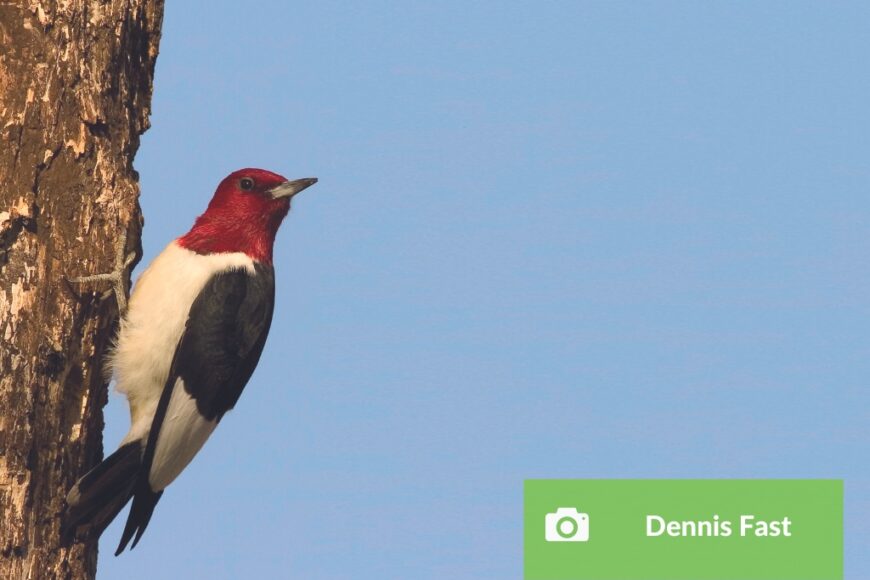Dawson Trail Dispatch, written by Norm Gregoire, December 2022
Page 24 https://issuu.com/dispatch222/docs/dawson_trail_dispatch_december_2022
Woodpeckers are one of the most dynamic families of birds we share the tall-grass prairie ecosystem with. They are highly adaptable species and come in a variety of unique colours and patterns. For me, the woodpecker that stands out from the rest is the red-headed woodpecker.
In southern Manitoba there is some confusion with what a red-headed woodpecker actually is. Most of our woodpecker species have at least some red on their head, including the pileated, downy, hairy, and my favourite name for any bird, the yellow-bellied sapsucker. The difference between the red-headed woodpecker and other woodpeckers, is that the entire head and throat is completely red, whether a male or female. I find a better characteristic to use for identifying if it’s a red-headed or not is to take note of the plumage on the rest of the body. On other woodpeckers the black and white is mottled, whereas on the red-headed the colouration appears in blocks. The breast is entirely white; the wings are black and have a single white block on them, and the tail is also black.
Once you see a red-headed woodpecker they are unforgettable; unfortunately, in Manitoba the numbers are quite low. Canadian populations are estimated to be as low as seven hundred to five thousand breeding pairs. Major reasons for the small population are attributed to the loss of old growth forests that the red-headed woodpecker depends on for nesting, feeding, and roosting. In southern Manitoba, shelter belts and well-grazed woodlots are particularly favoured by red-headed woodpecker. The first instinct of a property owner when an old tree begins to die may be to cut it down for safety or aesthetic reasons. If safe to do so, I prefer to leave them standing. Woodpeckers make use of these trees and in turn play a key role in maintaining the biodiversity in an area by excavating the cavities that provide nesting and sleeping areas for countless other species.
The good news for red-headed woodpeckers is that they are known to be adaptable. They are considered to be the most omnivorous of all woodpeckers in North America. Their diet consists of seeds, nuts, berries, insects and even occasionally eggs and other birds. How the red-headed hunts its prey is unique to the woodpecker family as well. When targeting insects, they act more like a flycatcher would, by flying out and snagging the insect mid-air before returning to the perch. Amazingly, red-headed woodpeckers are known to store these insects, such as grasshoppers and beetles, in tree cavities for later feeding.
I love the diversity of our wildlife in the tall-grass prairie, and I think the red-headed woodpecker showcases how unique this area is. The colouration, eating habits and the way they help to shape the surrounding ecosystem are all reasons why this at-risk species is truly a special part of our landscape.
Norm Gregoire
sarcommunityliaison@gmail.com

